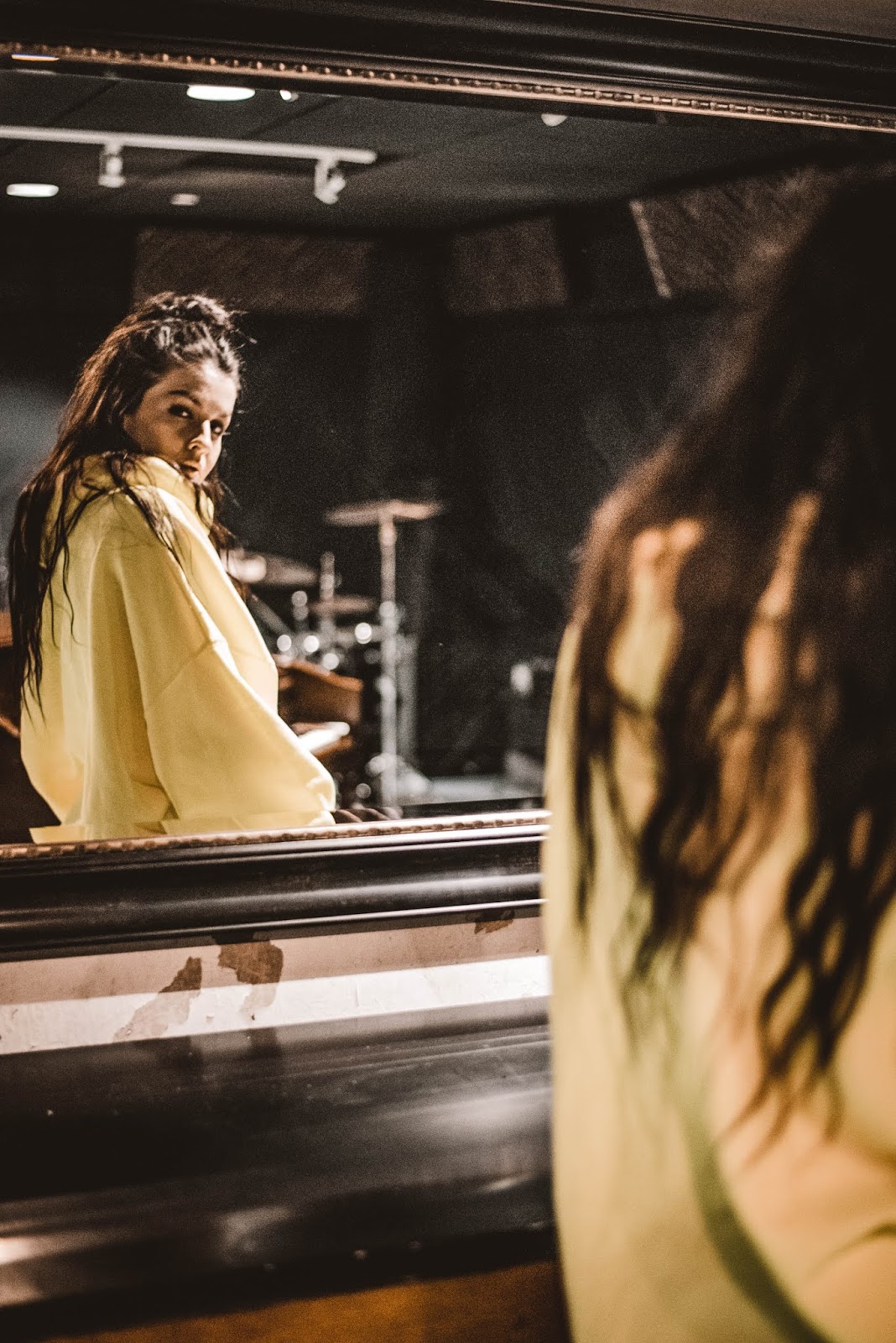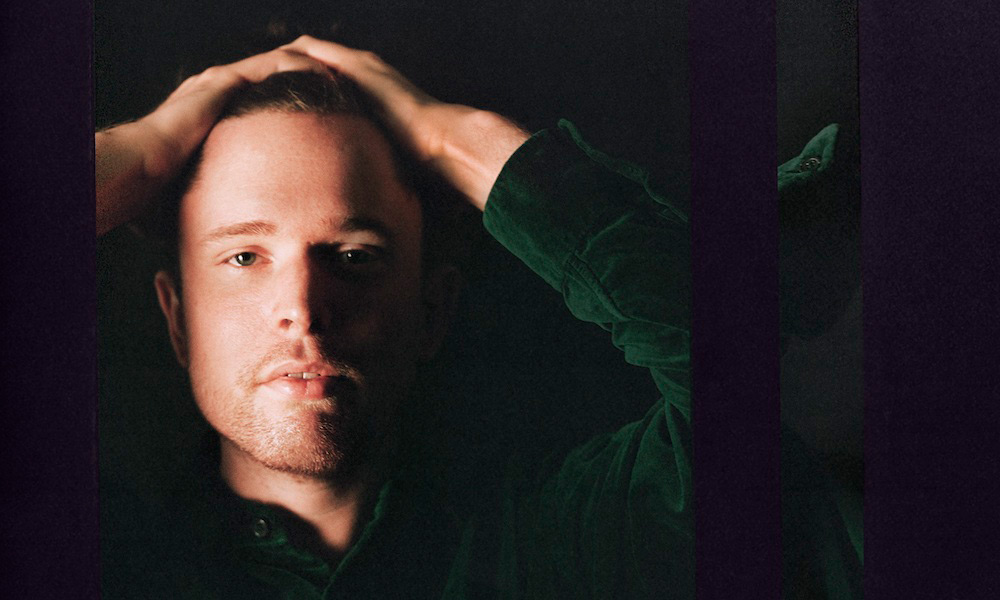Tour Review: "Good Morning, Goodbye" Tour with Frenship & Yoke Lore
Midway through the show, Brett Hite compares the room at Rock & Roll Hotel to a can of sardines.
"If any of you tell me in twenty years, 'Hey, remember that sardine show?' I'll know."
He adds, "James [Sunderland] won't remember, though." The crowd laughs. Then, the band jumps into a revamped version of "Morrison."
The first time I saw Frenship (Sunderland and Hite), they opened for Bastille at The NorVa. Days later, I saw them again at their sold-out headlining show at DC9. In that room, tucked between a restaurant and its rooftop bar, Frenship solidified themselves as one of my favorite acts. It was fun and invigorating, and every member of the live band poured their hearts into the performance. I have been itching to see them since then, and now, preparing for the release of their debut album (and a week into their two-month-long tour), I get to do just that.
 |
| Photo of Frenship by Bethany Camp | Full Gallery |
This time around, we're at Rock & Roll Hotel on H Street. It's about seventy-seven degrees out which isn't uncharacteristic for April in DC but is still unpleasant. This is a crucial detail because it gives Hite's "sardine" comment some context; this heat makes the main room infinitely hotter even when the crowd is doing nothing but standing and chatting among itself. The chatting becomes quickly irritating if only because it is a constant throughout the entire show, but it thankfully isn't enough to dampen the mood entirely.
Opening is Yoke Lore, a two-man set whose instruments are nothing more than a banjo, a drum kit, and maybe a couple of samplers. On drums is Garren Orr who, for what it's worth, has an awesome head of hair. Adrian Galvin--Yoke Lore himself--is on banjo and vocals.
Here's the thing: When I think of a white guy playing banjo, I imagine a scraggly man frantically plucking while I'm being chased through the wilderness of the Deep South. Not so with Yoke Lore. Instead, he plays the banjo like it's a drum, and to unsuspecting listeners, it can very easily be mistaken for a guitar or some other distinctly non-banjo instrument. There is no bluegrass quality to it that makes it feel like it's been lifted straight from my nightmares. I am not, however, saying that the music doesn't have its roots. When stripped free of production, it's clear that Galvin is inspired by folk music, but never does it seem like you've stepped into a dry Southern thriller. (See this for proof.)
 |
| Photo of Yoke Lore by Bethany Camp | Full Gallery |
Yoke Lore open with "Beige," a blooming banjo-heavy love song that never fails to give me this fluttering sensation when I hear it. This has nothing to do with the fact that I'm a sucker for love songs and more to do with the composition of it and the authenticity of Galvin's voice. He is candid in his lyrics in a way that isn't singular or surface-level, and everything he says is deliberately meaningful. The same goes for his introductions outside of the lyrics themselves. Although many of these things are premeditated, he speaks so naturally and unpretentiously that it sounds like he's giving these introductions for the first time, as though his intention was never to speak to a sweaty room of four hundred people. He explains "Goodpain" as "the idea that you need to go through periods of difficulty to get to the good shit of anything." A young girl, no older than eleven, is at the front of the stage, and when Galvin finishes this introduction, he gracefully apologizes to her for swearing.
On stage, Galvin is wildly energetic and deeply focused. He looks at each and every person before him, connecting through that second-long glance. For a lot of the room, this is enough to enrapture the audience. He gains its respect enough for the hundred or so people up front to stop talking, but it's unfortunately not enough to account for everyone else. This isn't a flaw on his part, though, and I only wish the audience gave Yoke Lore the attention and respect they deserved.
The set closes out with "Tom Robbins," a track inspired by Still Life with Woodpecker. It's the most folk-sounding out of the entire set, and it comes complete with a minute-long intro, numerous silences, and simple verses that are punctuated by hard drums and frantic banjo playing (of the non-nightmarish variety) and lots of stomping on Galvin's part. The end of it leaves the crowd applauding and Galvin drenched in sweat.
 |
| Photo of Yoke Lore by Bethany Camp | Full Gallery |
We have about twenty minutes as the stage is cleared and prepared. It has been adorned with realistic-looking trees at all corners, and in the direct center of the back wall is Frenship’s logo: a circle inscribed in another circle. When the lights finally go down, the logo lights blue, fading then back bright. As we wait for the band to take the stage, a man in the second row shouts, "Alexa?" Everyone around him laughs. These laughs dissipate and transform into excited cheers when Frenship finally come on.
Setting the tone for the rest of the night is "Carpet." It is jaunty, alive, and it peaks at the chorus right after the bridge; the lights go out and there is a momentary pause, all silence save for Sunderland singing, “Stretch yourself thin,” and after this, everything resumes, breaks free, and it suddenly becomes its most in this moment. This is maintained for the next hour, which surprises me particularly during “GOODMORNING, Goodbye”; it moves from its bell tolls and wistful vocals and transcends even beyond its production, becoming more high-energy in real-time. The heavy guitars brought by guitarist Dan Sadin and Hite have Sunderland headbanging along.
 |
| Photo of Frenship by Bethany Camp | Full Gallery |
There's something so incredibly charming about Frenship. Maybe it's the fact that they themselves feel the music they're making and never stop moving during their performance. The best example of this is during “Knives” when Hite in particular does this spinning move that looks almost like a backstroke happening in the air. This charm may also be in the way they interact with every part of the crowd as though they genuinely want to. Sunderland and Hite frequently switch spots, greeting and connecting with the crowd at each end as opposed to in one solitary space. Between each song, they further cement this relationship by bringing into conversation the entire crowd--particularly those in the back who can't really be seen in such a small, long room. Hite says, "Show me those hands, back row," and the back row shoots its hands up and cheers. He points at various spots in the crowd and too repeats, "I like those hands and those hands and those hands." James brings it back to the front and adds, "And these hands, front row, can't forget about these hands." The entire room is, at this point, beaming.
As far as new music goes, Frenship play four unreleased tracks. I had forgotten about some of these from when I saw them back in September, but the second the songs start, I instantly recognize them. I find myself knowing the words to the choruses even though I had only heard the songs once or twice beforehand, which I think serves as a testament to the musical ability of the artists. My personal favorite might be “Keep You Close,” on which they sing, “The jealous heart does all it can to keep you close.” Its rolling drums and honest vocals make it one of the most vulnerable songs they perform.
And since “Capsize” is undeniably the biggest song Frenship has, it’s important to note what—or who—I believe to be the band’s secret weapon; Celeste Taucher comes in the form of the band's keyboardist, and she is a superhero. Her voice is distinct in the choral notes of “GOODMORNING, Goodbye” and during the dreamily distorted sounds of “Run 2 You.” Here, though, she is finally brought front and center, taking her well-deserved spot between Sunderland and Hite. It’s here where nearly half the crowd pulls out their phones to preserve this moment of Taucher beautifully elevating the performance. And since we’re on the topic of superheroes, I also recognize both Sadin (and his velvety guitar solos, like in "Kids") and drummer JR Kurtz as superheroes. The latter is particularly important because although I could see very little of him from my spot in the audience, I could hear everything he did, and drummers are undoubtedly the backbone of any live band.
 |
| Photo of Frenship by Bethany Camp | Full Gallery |
“We’ve decided that this is not a tour for encores” is how Frenship introduces “1000 Nights.” It is the last song of the night, and about midway through, it cuts out of itself and is turned into this huge instrumental interlude which finds Sadin up front once again and Taucher and Sunderland on drums in the back. It spends a fantastic two or so minutes in this state before it transitions back into the final chorus. Never once does the energy Frenship brings falter. Their entire closing mirrors this fact from the movements of the band to the high wail of Sadin’s guitar and the general response of the audience itself. Everyone is undoubtedly pleased with the night, and I am so excited about all of it that I've even planned the Bowery show for a second round.
The “Good Morning, Goodbye” tour is making its way across the States and Canada until the end of May. You can find remaining dates and get your tickets here.






Comments
Post a Comment